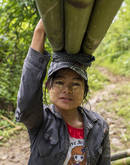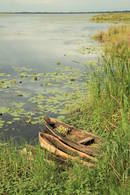News

The Lower Mekong basin is of global significance, boasting an incredibly high diversity of forest habitats. These forests are home not only to diverse and rare wildlife but are also relied upon by many communities for essential products and services. However, forest crimes, such as illegal logging and trade and the illegal conversion of forest land are pervasive across the region. There is a growing trend of investments from the expanding economies of China, Thailand and Viet Nam, to timber production and land intensive industries in the lower-income, higher forest cover countries of Cambodia, Lao PDR and Myanmar. Given the...

REDD+ is entering an exciting new phase. After years of preparation, an increasing number of countries are advancing in the implementation of REDD+ actions on the ground. One such country is Democratic Republic of the Congo, where FAO recently launched a four-year project in Equateur province with financial support from the REDD+ National Fund (Fond National REDD+ - FONAREDD).
The integrated project, called Programme Integré (PI-REDD), is carried out in collaboration with the World Wide Fund for Nature (WWF) and within the framework of the country’s REDD+ national strategy, building on support provided by the UN-REDD Programme. It aims to reduce...

Reducing emissions from deforestation and forest degradation (REDD+) has great potential to deliver environmental and social benefits beyond the reduction of greenhouse gas emissions. At the same time, such efforts may also bring social and environmental risks. In 2010, Parties to the United Nations Framework Convention on Climate Change (UNFCCC) in Cancún, Mexico, agreed on a set of seven social and environmental safeguards for REDD+ - known as the ‘Cancun safeguards’ to address these risks and promote positive impacts from REDD+. Countries are expected to promote and support these safeguards throughout REDD+ implementation, develop a safeguards information system (SIS) for...

Peatlands cover only 3 percent of the world's surface yet contain as much carbon as all of its vegetation, dramatically underscoring their pivotal role in global climate regulation. Their degradation, by drainage or fire or other forces, triggers their conversion from slow carbon sinks into fast sources capable of releasing carbon stored over millennia in a few decades.
To avoid their degradation and effectively plan their restoration, peatlands should be urgently mapped and monitored.To help member states on this complex task, FAO today launched Peatland mapping and monitoring, a practical publication full of accessible technical information about the world's peatlands and recommendations...

Uganda’s lush tropical jungles, rainforests, savannahs, lakes and rivers are home to an astonishing array of biodiversity. In addition to supporting wildlife, so vital for the country's future heritage and tourist industry, Uganda's forest resources are an essential foundation for the country's climate change commitments as well as livelihoods of forest-dependent communities.
However, these valuable forest resources are disappearing rapidly. According to Uganda’s Forest Reference Level submitted in 2017, deforestation in Uganda is occurring at a rate of 50,147 hectares annually, which creates emissions equivalent to 8,253,982 tons of CO2. If this rate continues unabated, most of the forested area of...

